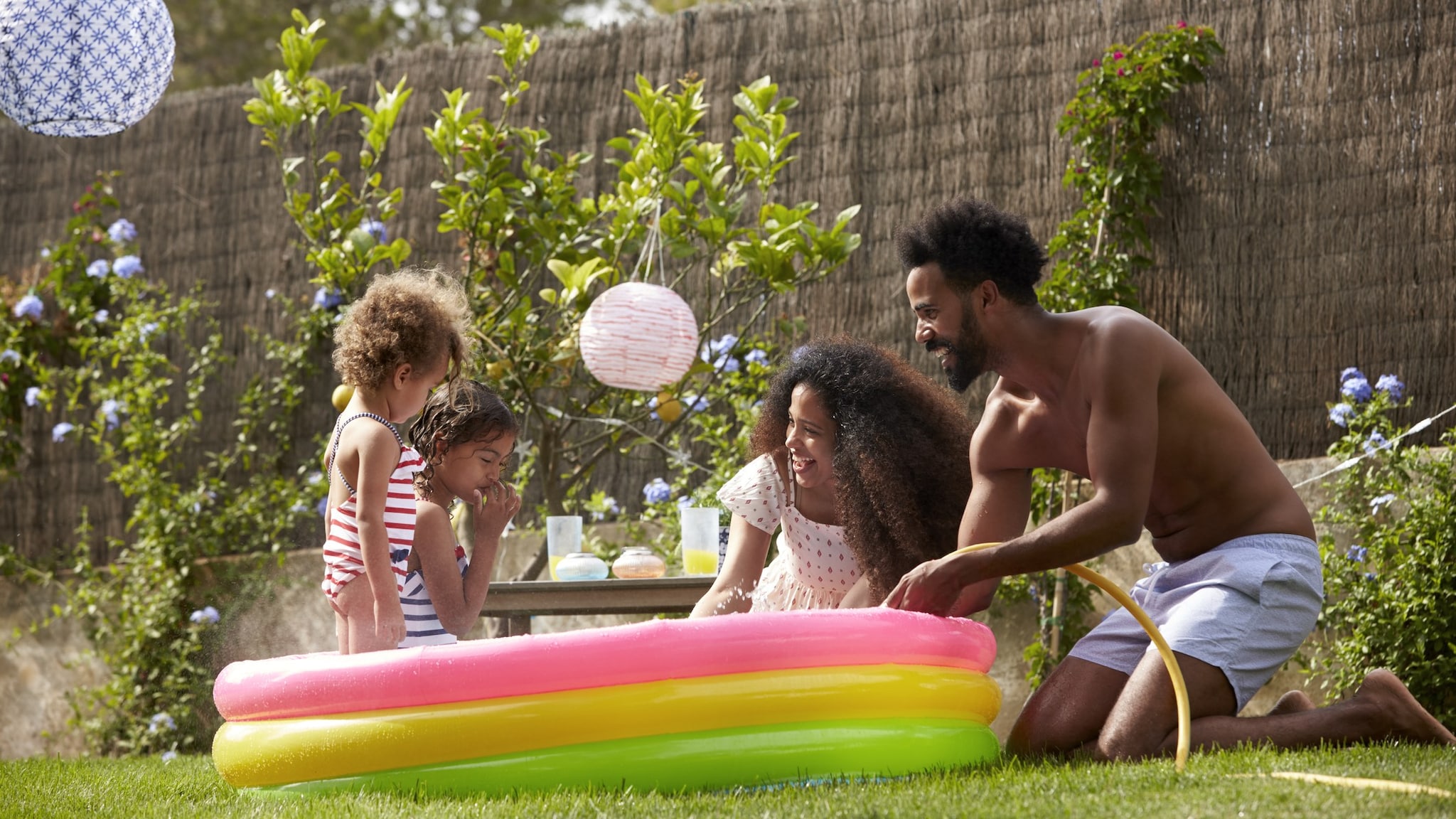Key points
- Inflatable or plastic kiddie pools and inflatable water slides can pose a drowning risk and spread germs.
- Keep a close eye on children when they are using the pool or slide.
- Know how to properly clean the pool or water slide after use.

The risks
Small inflatable or plastic kiddie pools and water slides don't have the same protection against germs that a swimming pool, hot tub, or splash pad do. It is unsafe to add germ-killing disinfectants, such as chlorine or bromine, to the water in kiddie pools and water slides because:
- A large portion of the water can be lost quickly through splashing or from spilling out, making it hard to figure out how much disinfectant should be added.
- They don't have filters to remove debris such as leaves, dirt, or skin cells which can use up the disinfectant needed to kill germs.
Because disinfectants are not added to the water, germs can spread more easily in small inflatable or plastic kiddie pools and water slides. Larger inflatable or plastic pools require a filter and disinfection. Follow the manufacturer's instructions for filtering and disinfecting these types of pools to prevent the spread of germs and protect everyone's health.
Drowning occurs quickly and quietly
Steps to take
Daily maintenance steps
The water in small inflatable or plastic pools and water slides should be emptied at least daily to help prevent the spread of germs. After emptying the water from the pool:
- Remove any debris.
- Rinse off any dirt with fresh water.
- Let the pool or water slide air dry.
To help keep others healthy, children who are sick with diarrhea or who have been vomiting should stay out of small inflatable or plastic kiddie pools and water slides. If someone has diarrhea or vomits in the water, they can contaminate it. If another person swallows this water, they can get sick. This is particularly important if children from different households use the pool or water slide.
Do not use plastic and inflatable kiddie pools with large groups of children
Cleaning and disinfecting the pool if a child poops or vomits in the water
Take these steps, even if the child is wearing a diaper:
- Get children out of the water.
- Put on disposable gloves.
- Remove as much poop or vomit as possible and dispose of it safely (for example, put the poop or vomit in a plastic trash bag or flush it down the toilet).
- Pour out or drain all of the water.
- Pour water into a drain or as far away from the play area as possible. Keep children away from the water until it dries.
- Pour water into a drain or as far away from the play area as possible. Keep children away from the water until it dries.
- Clean and disinfect the surfaces of the pool or water slide. Do the same for any objects that were in the water with the poop or vomit.
- Clean surfaces with soapy water.
- Rinse soapy water with fresh water.
- Allow surfaces to air dry completely. If the poop was diarrhea, put the pool or water slide and objects in the sun for at least 4 hours after they are done drying.
- Disinfect dry surfaces using a bleach solution. Dilute ½ cup of household bleach (5.25%–8.25%) in 1 gallon of room-temperature water. Do not use "splash-less" bleach.
- Apply bleach solution to all surfaces.
- Follow the manufacturer's application instructions for the amount of time the bleach solution should stay on the surfaces. If no instructions are available, leave the bleach solution on the surfaces for 6 minutes.
- Clean surfaces with soapy water.
- Rinse with fresh water.
- Allow surfaces to air dry completely.
- If the poop was diarrhea, leave the pool or water slide and the objects in the sun for at least 4 hours after they are completely dry.
- Remove gloves and place in a plastic trash bag with all dirty cleaning materials.
- Wash hands thoroughly with soap and water for at least 20 seconds.
